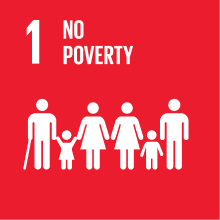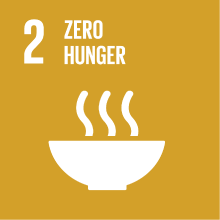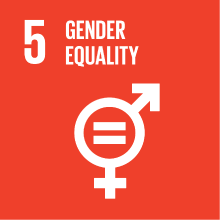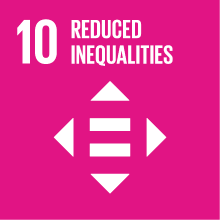HISTORY OF PORTUGUESE AND BRAZILIAN CULTURE
- Academic year
- 2025/2026 Syllabus of previous years
- Official course title
- STORIA DELLA CULTURA PORTOGHESE E BRASILIANA
- Course code
- LT1260 (AF:592178 AR:325898)
- Teaching language
- Italian
- Modality
- On campus classes
- ECTS credits
- 6
- Degree level
- Bachelor's Degree Programme
- Academic Discipline
- L-LIN/08
- Period
- 1st Semester
- Course year
- 3
- Where
- VENEZIA
- Moodle
- Go to Moodle page
Contribution of the course to the overall degree programme goals
Expected learning outcomes
Knowledge and understanding: knowledge of the formation of modern Brazilian literature; knowledge of the socio-cultural and historical-political dynamics that affect the work studied; mastery of scientific terminology for the critical analysis of literary texts.
2. Applied knowledge and understanding: highlight how the sertaneja culture influences the Brazilian collective imagination; read, analyze and interpret O Grande Sertão: Veredas
3. Autonomy of judgment: develop the ability to acquire and apply adequate critical tools in the analysis of the indicated text, on the thematic and stylistic-formal level also relating them to the context.
4. Communication skills: understand the exposition of an academic speech; express concepts with clarity and terminological precision.
5. Ability to learn to recognize the analytical aspects of the novel; formulate analytical hypotheses; the facts and materials examined and the ideas and context of which they are an expression.
Pre-requirements
Contents
The course starts from a reflection on the "sertão" as a biome and living place through the history of Brazilian literature. The "sertão" will be studied from the Middle Ages to modernity, privileging the existentialist side linked to European literature. In a first segment, the particular questions regarding myths, stereotypes, and the construction of national identity will be explored. Through the analysis of selected texts, the themes and peculiar traits of the author's writing will be illustrated, which will allow the articulation of a broad reflection on the thematic and linguistic renewal within a specific literary, historical, social and cultural context.
The following themes will be covered: the storyteller and the sertão; the "cangaceiro"; martyrs and heroines in the popular image; contrasts; The Sertão, by Euclides da Cunha; the "sertão" by Darcy Ribeiro; the "sertão" by Raquel de Queiroz; the critical bibliography of O Sertão: Veredas.
Referral texts
ROSA, J. G. Grande Sertão: Veredas. Rio de Janeiro: José Olympio, 1956.
Theoretical and critical studies:
ANDRADE, V. L. “Conceituação de jagunço e jagunçagem em Grande Sertão: Veredas.” In COUTINHO, E. F. Guimarães Rosa. Coleção Fortuna crítica. V. 6. Rio de Janeiro: Civilização Brasileira, 1983. 491-499.
ATRAVESSAR o Grande Sertão. Curso com José Miguel Wisnik. São Paulo: Atelier Paulista, 2022. Color. Disponível em: https://www.youtube.com/watch?v=dV3ZDLYSnvY . Acesso em: 18 nov. 2022. (vídeo)
BOLLE, W. grandesertão.br: o romance de formação. São Paulo: Duas cidades; Ed. 34, 2004.
_. O sertão como forma de pensamento. Scripta, 2(3), 259-271. Belo Horizonte, PUCMinas, 1998.
CAMPOS, A. de. “Um lance de ‘Dês’ do Grande Sertão”. In COUTINHO, E. F. Guimarães Rosa. Coleção Fortuna crítica. V. 6. Rio de Janeiro: Civilização Brasileira, 1983. P. 321-349.
CANDIDO, A. “O homem dos avessos”. In IDEM. Tese e antítese. São Paulo: Ouro sobre Azul, 2017.
GALVÃO, W. N. “O certo no incerto: o pactário”. In COUTINHO, E. F. Guimarães Rosa. Coleção Fortuna crítica. V. 6. Rio de Janeiro: Civilização Brasileira, 1983. 408-421.
GARBUGLIO, J. C. O mundo movente de Guimarães Rosa. São Paulo, Ática, 1972.
HANSEN, João Adolfo. A imaginação do paradoxo. In: Floema. Ano II, n. 3, p. 103-108, jan./jun. 2006, pp. 103-8.
_. O O: a ficção da literatura em Grande sertão: veredas. São Paulo: Hedra, 2000.
LARA, C. de. Grande Sertão: Veredas – Processo de criação. Scripta, 2(3), 41-49. Belo Horizonte, PUCMinas, 1998.
LIMA, L. C. “O sertão e o mundo”. In IDEM. Por que literatura? Petrópolis: Vozes, 1966. 73-99.
LORENZ, Günter. “Diálogo com Guimarães Rosa”. In COUTINHO, E. F. Guimarães Rosa. Coleção Fortuna crítica. V. 6. Rio de Janeiro: Civilização Brasileira, 1983. P. 62-97.
MARTINS, N. S. O Léxico de Guimarães Rosa. São Paulo: Edusp, 2021.
NUNES, B. A Rosa o que é de Rosa: literatura e filosofia em Guimarães Rosa. São Paulo: Bertrand Brasil, 2013.
_. O mito em Grande Sertão: Veredas. Scripta, 2(3), 33-40. Belo Horizonte, PUCMinas, 1998.
PRADO JÚNIOR, Bento. O destino cifrado: linguagem e existência em Guimarães Rosa: alguns ensaios, São Paulo: Max Limonade, 1985.
RÓNAI, P. Rosa & Rónai: O universo de Guimarães por Paulo Rónai, seu maior decifrador. Org. Martins, Ana C. et alii. Rio de Janeiro: Bazar do Tempo, 2020.
RONCARI, L. Lutas e auroras: os avessos do Grande Sertão: Veredas. São Paulo: Editora UNESP, 2018.
ROSENBAUM, Y.. A Batalha Final: Riobaldo na encruzilhada dos Fantasmas. Literatura e Sociedade (USP), v. 1, p. 137-147, 2008.
SCHWARZ, R. “Grande sertão: a fala”. In IDEM. A sereia e o desconfiado. Rio de Janeiro: Civilização Brasileira, 1965.
STARLING, H. M. M. (1998). O sentido do moderno no Brasil de João Guimarães Rosa - veredas de politica e ficção. Scripta, 2(3), 138-146. Belo Horizonte, PUCMinas, 1998.
UTÉZA, F. JGR: metafísica do Grande Sertão. São Paulo: EdUSP, 2016.
_. Realismo e transcendência: o mapa das minas do grande sertão. Scripta, 2(3), 127-137. Belo Horizonte, PUCMinas, 1998.
Assessment methods
The final written exam has 6 questions (5 points each) and must be handwritten, made between 3 or 4 pages (about half a page for each question). It must be a personal commentary that shows how to intertwine the various points of the study, in order to verify the depth of the topic developed and its connection with the entire content of the course (debate, bibliography and lessons). For those who have done the creative work, it is enough to answer four questions.
Type of exam
Grading scale
between 18 and 24 if the student shows sufficient knowledge of the course content
between 25 and 28 if the student shows good knowledge of the topics and critical analysis skills
between 29 and 30 if the student shows excellent knowledge of the topics, confidence in presentation and excellent critical analysis skills.
Teaching methods
Further information
2030 Agenda for Sustainable Development Goals
This subject deals with topics related to the macro-area "Poverty and inequalities" and contributes to the achievement of one or more goals of U. N. Agenda for Sustainable Development




